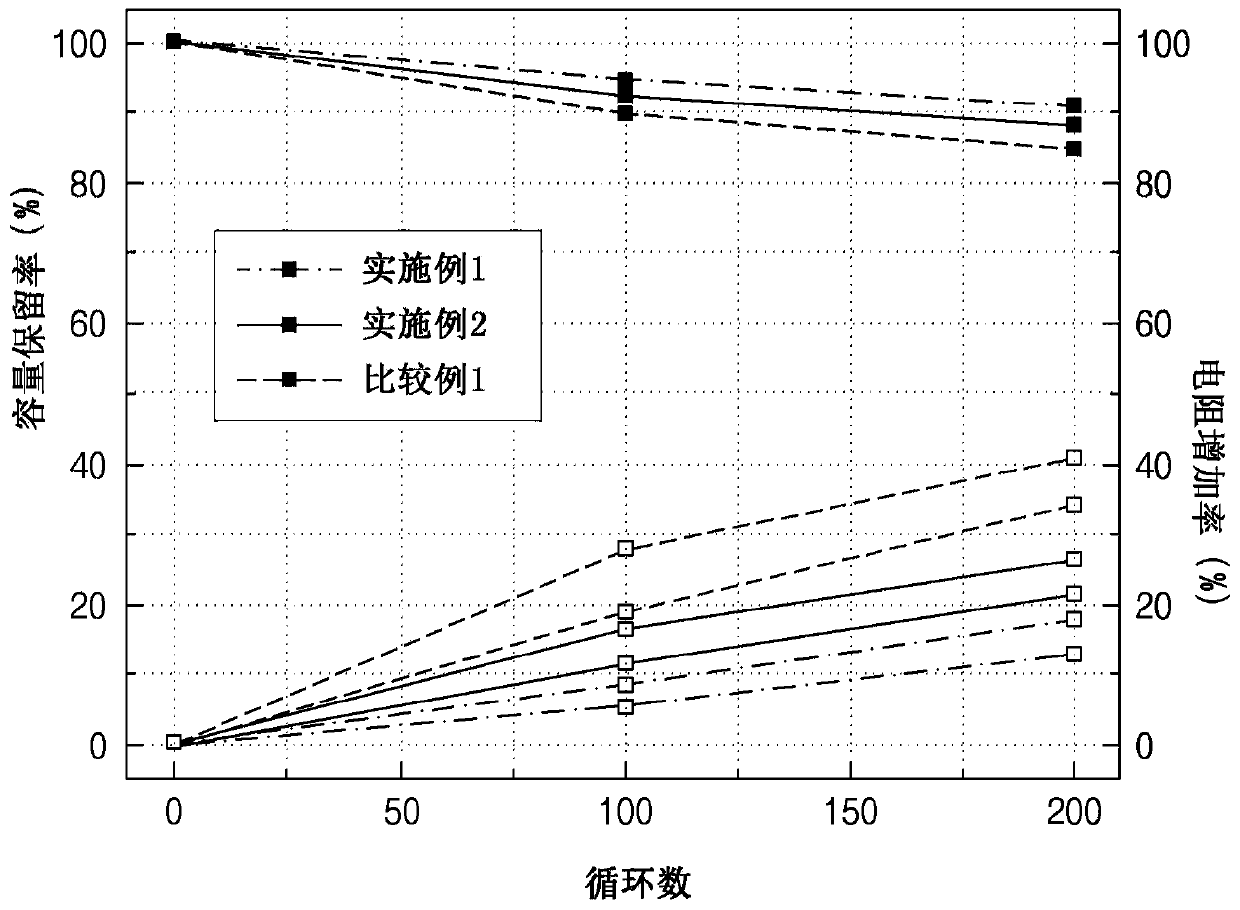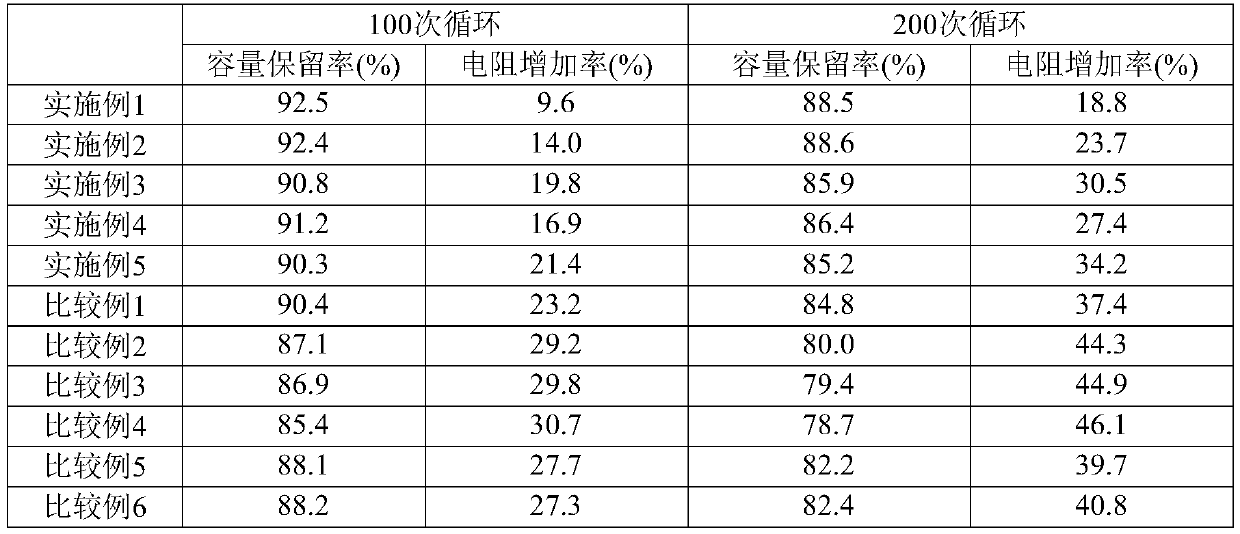Cathode material for lithium secondary battery, and cathode and lithium secondary battery which comprise same
A cathode material, cathode active material technology, applied in the field of cathodes and lithium secondary batteries, can solve the problems of reducing energy density, current collector breakage, low particle rolling density, etc., and achieve excellent high temperature life characteristics, excellent capacity characteristics, high The effect of rolling density
- Summary
- Abstract
- Description
- Claims
- Application Information
AI Technical Summary
Problems solved by technology
Method used
Image
Examples
Embodiment 1
[0106] The average particle size (D 50 ) is 5μm LiNi 0.8 co 0.1 mn 0.1 o 2 and average particle size (D 50 ) is 15μm LiNi 0.83 co 0.11 mn 0.04 Al 0.02 o 2 Mix with a weight ratio of 30:70 to prepare positive electrode material A.
[0107] The positive electrode material A prepared as described above, the carbon black conductive material and the PVdF binder were mixed in a weight ratio of 96:2:2, and then the mixture was mixed in NMP solvent to prepare a positive electrode mixed material. The positive electrode mixture material was coated on an aluminum foil having a thickness of 12 μm, dried, and then rolled to manufacture a positive electrode.
[0108] Meanwhile, graphite negative electrode active material, carbon conductive material (SuperC65), and PVdF binder were mixed in a weight ratio of 95.6:0.75:3.65, and then the mixture was added to NMP solvent to prepare negative electrode mixed material. The anode mixture material was coated on a copper foil with a thick...
Embodiment 2
[0111] The average particle size (D 50 ) is 15μm LiNi 0.8 co 0.1 mn 0.1 o 2 and average particle size (D 50 ) is 5μm LiNi 0.83 co 0.11 mn 0.04 Al 0.02 o 2 Mix with a weight ratio of 70:30 to prepare positive electrode material B.
[0112] A lithium secondary battery was manufactured in the same manner as in Example 1, except that the positive electrode material B prepared as above was used instead of the positive electrode material A.
Embodiment 3
[0114] The average particle size (D 50 ) is 10μm LiNi 0.8 co 0.1 mn 0.1 o 2 and average particle size (D 50 ) is 5μm LiNi 0.83co 0.11 mn 0.04 al 0.02 o 2 Mix with a weight ratio of 70:30 to prepare positive electrode material C.
[0115] A lithium secondary battery was manufactured in the same manner as in Example 1, except that the positive electrode material C prepared above was used instead of the positive electrode material A.
PUM
| Property | Measurement | Unit |
|---|---|---|
| particle size | aaaaa | aaaaa |
| particle size | aaaaa | aaaaa |
| particle size | aaaaa | aaaaa |
Abstract
Description
Claims
Application Information
 Login to View More
Login to View More - Generate Ideas
- Intellectual Property
- Life Sciences
- Materials
- Tech Scout
- Unparalleled Data Quality
- Higher Quality Content
- 60% Fewer Hallucinations
Browse by: Latest US Patents, China's latest patents, Technical Efficacy Thesaurus, Application Domain, Technology Topic, Popular Technical Reports.
© 2025 PatSnap. All rights reserved.Legal|Privacy policy|Modern Slavery Act Transparency Statement|Sitemap|About US| Contact US: help@patsnap.com


